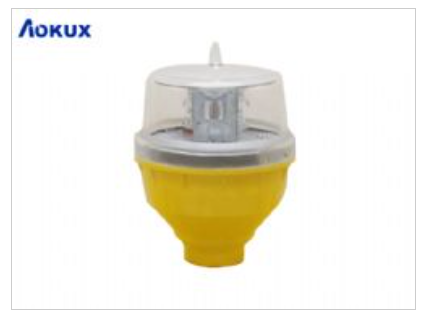
In aviation, ensuring that pilots can navigate safely around obstacles is of paramount importance. The use of light obstruction systems and low intensity obstacle light solutions are critical components in this safety strategy. These lighting systems help pilots identify potential hazards, particularly during low-visibility conditions, thus preventing accidents and ensuring smooth operations. This article delves into the characteristics, importance, and technological advancements of light obstruction and low intensity obstacle light systems, emphasizing their roles in enhancing aviation safety.
Understanding Light Obstruction Systems
Definition and Purpose
Light obstruction systems are designed to mark obstacles that could pose hazards to aircraft. These systems typically involve the use of lights strategically placed on structures such as towers, buildings, and cranes to ensure they are visible to pilots. The primary purpose of these lights is to prevent collisions by making these obstacles stand out against their surroundings.
Types of Light Obstruction Systems
Low Intensity Lights: These are used for marking obstacles that are relatively low in height or where there is sufficient ambient light. They are typically red and have a lower brightness compared to higher intensity lights.
Medium Intensity Lights: These lights are used for taller structures or in areas where low intensity lights might not provide adequate visibility. They can be either red or white and are often designed to flash to catch the attention of pilots.
High Intensity Lights: These are used for very tall structures or in critical areas such as near airports. They are usually white and extremely bright, ensuring visibility from great distances even in daylight.

Characteristics of Light Obstruction Systems
Color and Intensity: Light obstruction systems use standardized colors (red for low intensity, white for medium and high intensity) to ensure consistency and easy recognition. The intensity is chosen based on the height of the obstacle and environmental conditions.
Flashing Patterns: For medium and high intensity lights, specific flashing patterns are used to distinguish them from other lights and to grab the attention of pilots.
Durability: These lights are designed to withstand harsh weather conditions, including extreme temperatures, wind, and precipitation. They are made from materials that resist corrosion and require minimal maintenance.
Low Intensity Obstacle Light
Characteristics of Low Intensity Obstacle Light
Low intensity obstacle lights are a specific type of light used in light obstruction systems. They are designed for obstacles that are relatively low in height, typically below 45 meters (approximately 150 feet).
Color: Low intensity obstacle lights are usually red, as red light is easily distinguishable at night and helps in maintaining the night vision of pilots.
Intensity: As the name suggests, these lights have a low intensity, which is sufficient for the purpose they serve. The brightness is enough to make the obstacle visible without causing glare or distraction.
Steady-Burning: Unlike higher intensity lights, low intensity obstacle lights are typically steady-burning rather than flashing. This provides a constant visual reference for pilots.
Energy Efficiency: Modern low intensity obstacle lights often use LED technology, which is highly energy-efficient and has a longer lifespan compared to traditional incandescent or halogen bulbs.

Importance of Low Intensity Obstacle Light
Safety: The primary function of low intensity obstacle lights is to enhance safety by marking low-height obstacles that could pose a risk to aircraft. By making these structures visible, the risk of collisions is significantly reduced.
Regulatory Compliance: The use of low intensity obstacle lights ensures compliance with aviation safety regulations set by bodies such as the International Civil Aviation Organization (ICAO) and the Federal Aviation Administration (FAA). Compliance is mandatory for maintaining the safety and integrity of airspace.
Cost-Effectiveness: Low intensity lights are cost-effective solutions for marking obstacles. Their lower intensity and steady-burning nature reduce energy consumption and maintenance costs, making them economical for use on multiple structures.
Versatility: These lights are versatile and can be used in a variety of applications, including marking buildings, communication towers, wind turbines, and other structures that are not excessively tall.
Technological Advancements
LED Technology
The adoption of LED technology has revolutionized low intensity obstacle lights, providing several key benefits:
Energy Efficiency: LEDs consume less power while providing adequate illumination, leading to significant energy savings.
Longevity: LEDs have a much longer operational life, often lasting tens of thousands of hours, which reduces the frequency of replacements and maintenance.
Durability: LEDs are more resistant to shock and vibration, making them ideal for use in harsh environmental conditions.
Smart Control Systems
Modern low intensity obstacle lights are increasingly equipped with smart control systems, which offer several advantages:
Remote Monitoring and Control: These systems allow for remote adjustment and monitoring of the lights, ensuring optimal performance without the need for physical inspections.
Automatic Brightness Adjustment: Some systems can automatically adjust the brightness of the lights based on ambient conditions, ensuring visibility while minimizing energy consumption.
Diagnostics and Reporting: Smart systems provide real-time diagnostics and reporting, enabling proactive maintenance and reducing the likelihood of unexpected failures.
Solar Power Integration
The integration of solar power has led to the development of solar-powered low intensity obstacle lights, offering numerous benefits:
Sustainability: Solar-powered lights utilize renewable energy, reducing reliance on grid electricity and lowering carbon footprints.
Cost Savings: Utilizing solar energy reduces electricity bills. The long lifespan of solar panels and batteries further contributes to cost savings.
Remote Applications: Solar-powered lights are ideal for remote or off-grid locations where connecting to the electrical grid is challenging or expensive.
Regulatory Framework
ICAO Guidelines
The International Civil Aviation Organization (ICAO) sets the global standards for the marking of obstacles. These guidelines ensure that obstacles are appropriately marked to enhance aviation safety. Key aspects include:
|
light obstruction |
low intensity obstacle light |
| 864 | 810 |